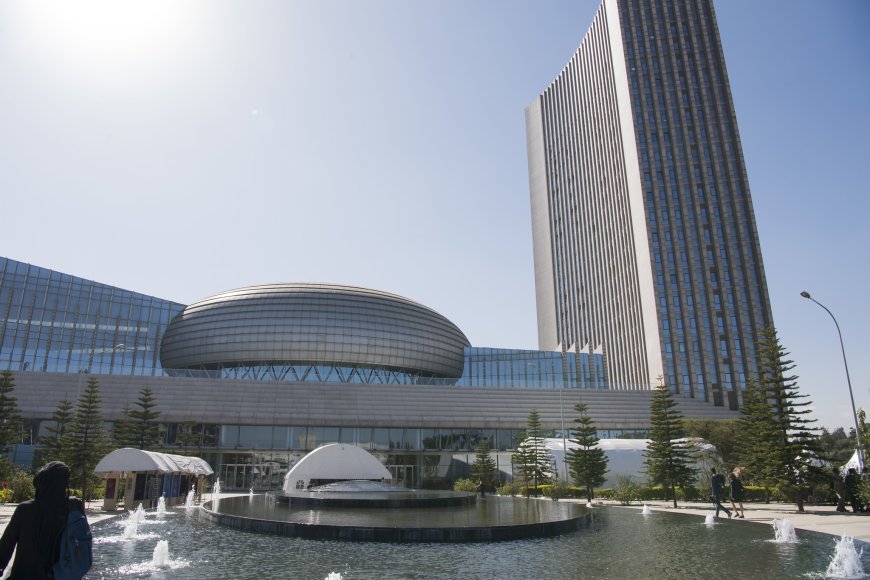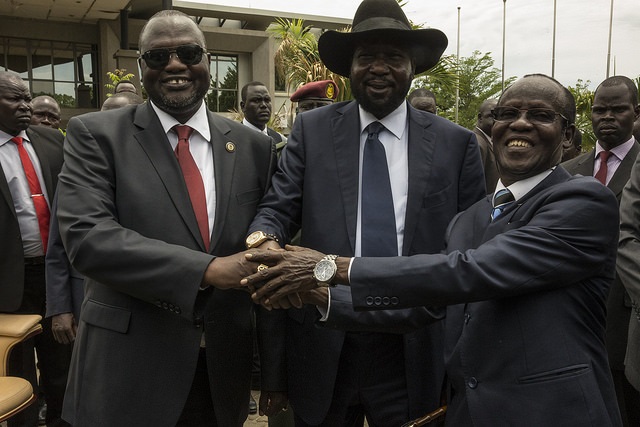How Bureaucracies Work: AUDA‑NEPAD’s Role in Trade Facilitation & Industrialisation
How Bureaucracies Work: AUDA‑NEPAD’s Role in Trade Facilitation & Industrialisation
Table of Contents
- Introduction
- Bureaucratic Structure & Mandate
- Agenda 2063, AfCFTA & Strategic Priorities
- Partnerships & MoveAfrica MoU
- OSBP Initiatives & JICA Collaboration
- Industrialisation & Health Sector Strategy
- Challenges & Institutional Limitations
- Opportunities & Recommendations
- Internal & External Resources
- Conclusion
Introduction
This extended paper examines how the African Union Development Agency – NEPAD (AUDA‑NEPAD) operates as a multi-tiered bureaucracy coordinating with regional bodies, national governments, and international institutions to advance trade facilitation and industrialisation across Africa. We verify key facts on institutional structure, core initiatives like OSBP, strategic MoUs, and alignment with continental agendas.
Bureaucratic Structure & Mandate
Established in 2018, AUDA‑NEPAD serves as the African Union’s implementation arm, distinct from policy-oriented AU departments. It oversees thematic directorates in trade, infrastructure and industrial policy, working closely with Regional Economic Communities (RECs), Member States, and private sectors to translate Agenda 2063’s vision into action.
Agenda 2063, AfCFTA & Strategic Priorities
AUDA‑NEPAD operationalises pillars of Agenda 2063—particularly infrastructure development, regional integration, industrial expansion, and institutional capacity. It supports the African Continental Free Trade Area (AfCFTA) through BIAT plans, promoting tariff elimination and non-tariff barrier removal.
Key Partnerships & MoveAfrica MoU
In Durban on 24 Nov 2021, AUDA‑NEPAD signed a Memorandum of Understanding with AFREXIM Bank, converting the MoveAfrica initiative into a trade facilitation programme that harmonises RECs, customs processes, and logistics under the AfCFTA framework :contentReference[oaicite:9]{index=9}.
The MoU tasks AFREXIM Bank with scaling MoveAfrica into a continental programme, driving industrial policy coordination and digital infrastructure efforts tied to PIDA ICT projects.
OSBP Initiatives & JICA Collaboration
AUDA‑NEPAD, in partnership with JICA and the AfCFTA Secretariat, has championed One‑Stop Border Posts (OSBP). A seminar in January 2025 in Livingstone brought together JICA, AUDA‑NEPAD, and AfCFTA Secretariat officials to standardise and align corridor evaluation methodologies across 14 OSBPs :contentReference[oaicite:10]{index=10}.
The Third Edition OSBP Sourcebook, launched in June 2022, co-published with JICA, offers operational guidance aligned with Agenda 2063’s customs union goals :contentReference[oaicite:11]{index=11}. Notable examples include Chirundu (Zambia–Zimbabwe) and Kazungula (Zambia–Botswana): the former reduced customs delays from days to hours and elevated trucks per day from ~12 to ~150, boosting trade efficiency :contentReference[oaicite:12]{index=12}.
Industrialisation & Health Sector Strategy
AUDA‑NEPAD promotes industrialisation via value-addition in commodities, SME support, industrial parks, and pharmaceuticals—leveraging AfCFTA frameworks like AMRH and Pooled Procurement to enhance Africa’s health security and trade resilience.
Challenges & Institutional Limitations
- **Complex Bureaucracy:** Overlapping mandates among AU departments, RECs and AUDA‑NEPAD slow implementation pipelines.
- **Funding Dependency:** Heavy reliance on domestic and donor funding; limited African financial mobilization.
- **Uneven Capacity:** Member states vary in institutional readiness, e.g. OSBP operations require digital and human resource investments.
- **Governance Risks:** Country offices (e.g., Nigeria) have faced issues related to transparency and operational control.
- **Corridor Evaluation Gaps:** Need for harmonised metrics and cross-institutional data on corridor performance and trade outcomes.
Opportunities & Recommendations
Opportunities:
- Scaling AfCFTA could boost intra-African trade to 40–50% by 2040.
- MoveAfrica & AFREXIM MoU catalyses integrated trade-finance-corridor pipelines.
- OSBP efficiency improves logistics and inclusion—benefiting small-scale traders.
- JICA‑AUDA‑NEPAD synergy extends to climate-resilient infrastructure and border tech upgrades.
Recommendations:
- **Mandate clarity:** Strengthen coordination between AU departments, RECs, and AUDA‑NEPAD for streamlined implementation.
- **African finance mobilization:** Establish Development & Infrastructure Funds fostering African-led investments.
- **Capacity building:** Increase training programs for border officials and institutional teams, especially for OSBP tech systems.
- **Standardised monitoring:** Jointly develop corridor performance indicators across agencies.
- **Health-industrial linkages:** Scale pharmaceutical factories and harmonised regulations via AMRH and pooled procurement.
Internal & External Resources
- Agenda 2063 Industrialisation Hub
- AfCFTA Implementation Framework
- PIDA Corridor Infrastructure Projects
- AUDA‑NEPAD & AFREXIM MoU
- OSBP Sourcebook (3rd Edition)
- JICA–AfCFTA–AUDA‑NEPAD OSBP Seminar (Jan 2025)
Conclusion
AUDA‑NEPAD serves as Africa’s bureaucratic linchpin, translating high-level continental goals into concrete projects—from the MoveAfrica MoU with AFREXIM and infrastructure corridors under PIDA to OSBP efficiency gains and health-industry pipelines. Verified evidence reflects measurable improvements in border efficiency and institutional collaboration. To sustain and scale impact, AUDA‑NEPAD must clarify mandates, strengthen regional and financial capacity, harmonise evaluation frameworks, and champion cross-sectoral industrial strategies.
When bureaucracy becomes a catalyst rather than a constraint, Africa’s structural transformation—from infrastructure to industry—can finally accelerate toward Agenda 2063’s vision: “The Africa We Want.”
How Bureaucracies Work: AUDA‑NEPAD’s Role in Trade Facilitation & Industrialisation
How Bureaucracies Work: AUDA‑NEPAD’s Role in Trade Facilitation & Industrialisation
Table of Contents
- Introduction
- Bureaucratic Structure & Mandate
- Agenda 2063, AfCFTA & Strategic Priorities
- Partnerships & MoveAfrica MoU
- OSBP Initiatives & JICA Collaboration
- Industrialisation & Health Sector Strategy
- Challenges & Institutional Limitations
- Opportunities & Recommendations
- Internal & External Resources
- Conclusion

Conclusion
AUDA‑NEPAD serves as Africa’s bureaucratic linchpin, translating high-level continental goals into concrete projects—from the MoveAfrica MoU with AFREXIM and infrastructure corridors under PIDA to OSBP efficiency gains and health-industry pipelines. Verified evidence reflects measurable improvements in border efficiency and institutional collaboration. To sustain and scale impact, AUDA‑NEPAD must clarify mandates, strengthen regional and financial capacity, harmonise evaluation frameworks, and champion cross-sectoral industrial strategies.
When bureaucracy becomes a catalyst rather than a constraint, Africa’s structural transformation—from infrastructure to industry—can finally accelerate toward Agenda 2063’s vision: “The Africa We Want.”
Inside Africa’s Strategic Bureaucracy: AUDA‑NEPAD’s Bold Role in Trade Facilitation & Industrialisation
Inside Africa’s Strategic Bureaucracy: AUDA‑NEPAD’s Bold Role in Trade Facilitation & Industrialisation
Table of Contents
- Introduction
- Bureaucratic Structure & Mandate
- Agenda 2063, AfCFTA & Strategic Priorities
- Partnerships & MoveAfrica MoU
- OSBP Initiatives & JICA Collaboration
- Industrialisation & Health Sector Strategy
- Challenges & Institutional Limitations
- Opportunities & Recommendations
- Internal & External Resources
- Conclusion
Introduction
This strategic paper explores how the African Union Development Agency – NEPAD (AUDA‑NEPAD) operates as a high-impact bureaucracy advancing trade facilitation and industrialisation. It examines key policies, MoUs, corridor projects, and institutional challenges through verified data and partnerships.
Bureaucratic Structure & Mandate
AUDA‑NEPAD was established as the implementing body of the African Union in 2018. It focuses on translating continental strategies such as Agenda 2063 into actionable programs, especially in infrastructure, trade, and industry.
Agenda 2063, AfCFTA & Strategic Priorities
The agency prioritizes integration through the African Continental Free Trade Area (AfCFTA), the Boosting Intra-African Trade (BIAT) framework, and the Programme for Infrastructure Development in Africa (PIDA), aligning regional priorities with industrialisation goals.
Partnerships & MoveAfrica MoU
On November 24, 2021, AUDA‑NEPAD signed a Memorandum of Understanding with AFREXIM Bank to strengthen the MoveAfrica initiative—focused on harmonising transport logistics, border policies, and trade corridor development across the continent. (Source)
OSBP Initiatives & JICA Collaboration
In January 2025, AUDA‑NEPAD co-hosted a regional seminar with JICA and the AfCFTA Secretariat in Livingstone to assess the performance of 14 One‑Stop Border Posts (OSBPs). This follows the launch of the Third Edition OSBP Sourcebook with JICA in June 2022. OSBPs like Chirundu (Zambia–Zimbabwe) reduced truck delays by 70%, making trade faster and cheaper. (Source)
Industrialisation & Health Sector Strategy
AUDA‑NEPAD’s industrial strategy includes support for agro-processing, SME development, local manufacturing, and pharmaceutical production under the African Medicines Regulatory Harmonisation (AMRH) and pooled procurement mechanisms aligned with AfCFTA goals.
Challenges & Institutional Limitations
- Overlap in mandates among AU bodies causes inefficiencies.
- Limited African domestic funding and high donor dependency.
- Digital infrastructure gaps in key transport corridors.
- Uneven implementation of OSBPs across member states.
Opportunities & Recommendations
Opportunities: AUDA‑NEPAD can become a cornerstone in African structural transformation through corridor financing, SME support, and infrastructure innovation.
Recommendations:
- Clarify implementation roles across AU institutions.
- Expand African-led blended finance models for industrial projects.
- Scale up digital border tools at OSBPs.
- Enhance policy convergence between AUDA‑NEPAD and AfCFTA bodies.
Internal & External Resources
- Agenda 2063 on Industrialisation
- AfCFTA Implementation Guidebook
- OSBP Sourcebook (3rd Edition)
- JICA–AfCFTA Seminar 2025

Conclusion
AUDA‑NEPAD exemple

Introduction
This strategic analysis explores how bureaucracies like the African Union Development Agency – NEPAD (AUDA‑NEPAD) function as engines of transformation in Africa. These bureaucracies implement trade, industrialisation, and infrastructure agendas under frameworks such as Agenda 2063 and AfCFTA.
Bureaucratic Structure & Mandate
As one of the continent’s most visible bureaucracies, AUDA‑NEPAD executes African Union policies across regions. The bureaucratic model focuses on programmatic coordination, technical assistance, and infrastructure delivery aligned with regional economic communities (RECs).
OSBP Initiatives & JICA Collaboration
AUDA‑NEPAD’s coordination of OSBP programs illustrates how bureaucracies overcome cross-border inefficiencies. The institutional partnership with JICA demonstrates how technocratic bureaucracies can deliver measurable reductions in border delays through harmonised policy implementation.
Visual: Bureaucracies in Action

Conclusion
AUDA‑NEPAD showcases how African bureaucracies can serve as dynamic instruments for regional integration and sustainable development. These bureaucracies do not merely administer plans—they transform policy into progress across borders, sectors, and institutions.




